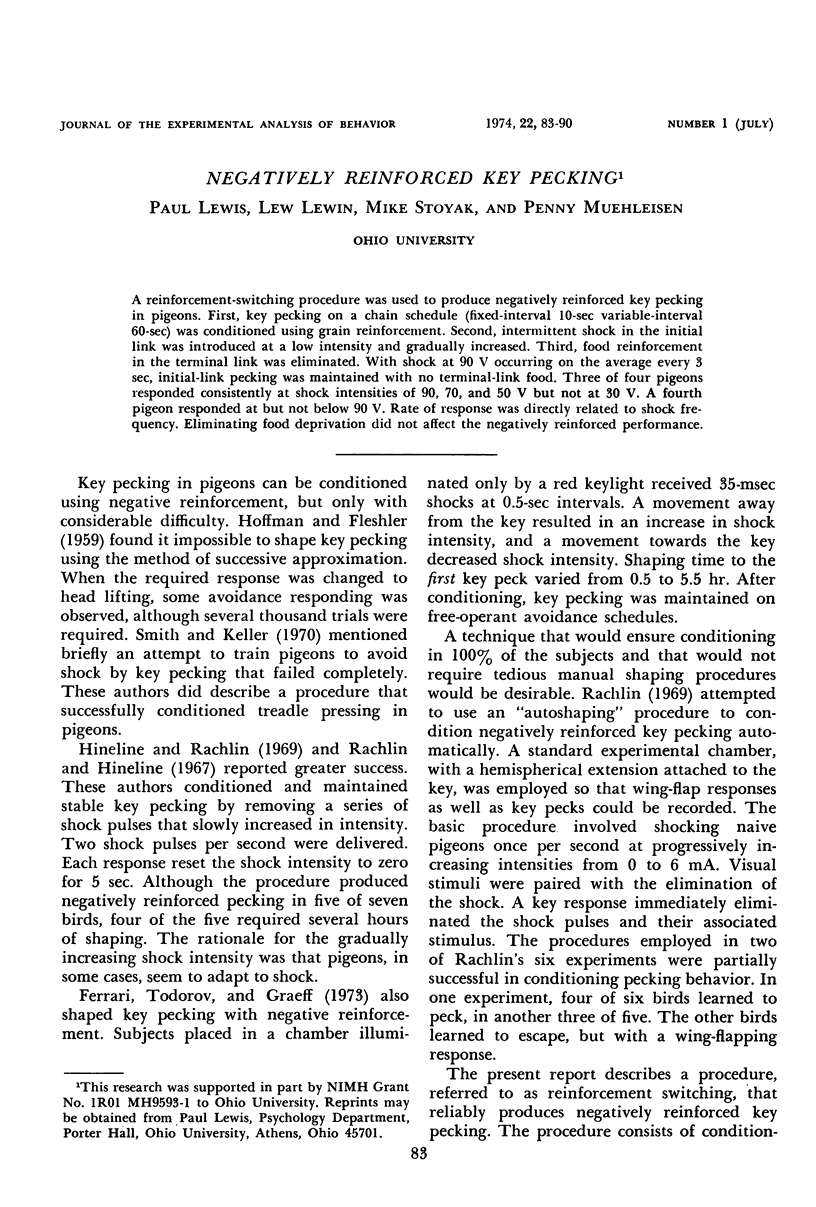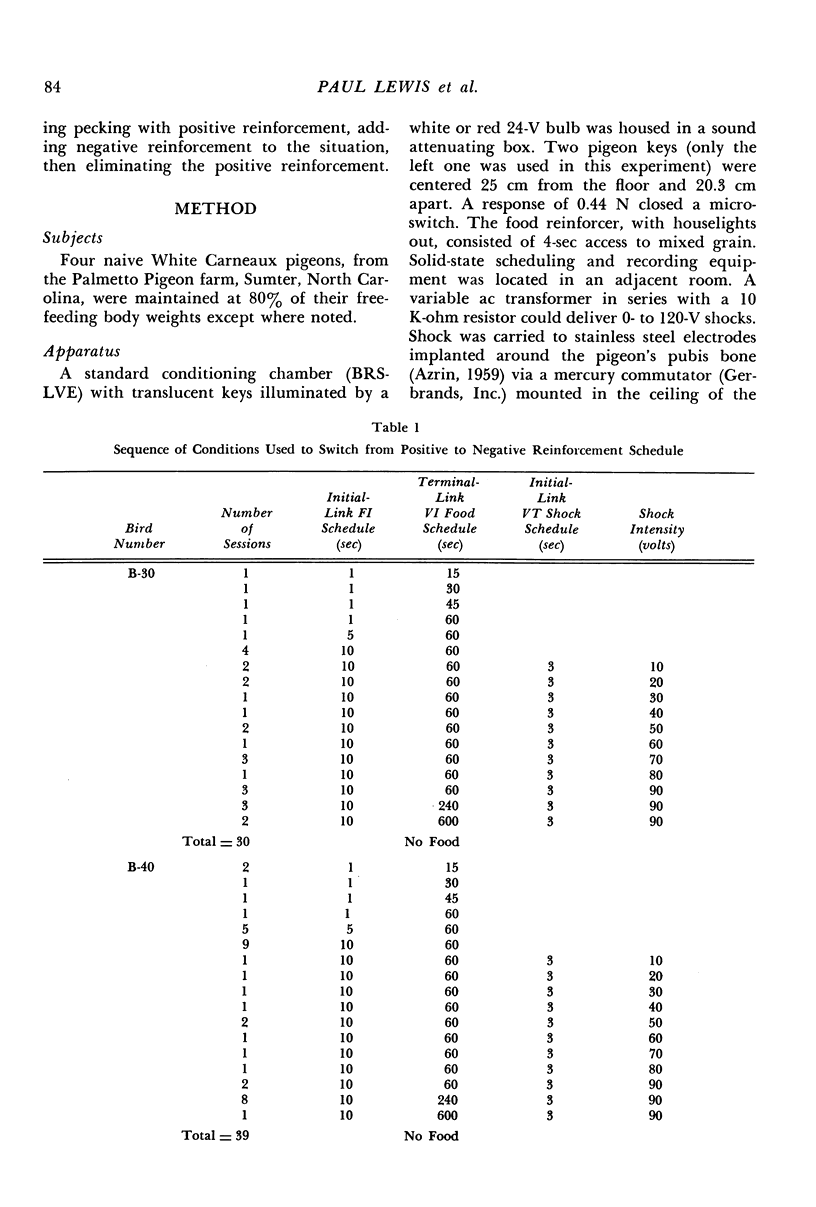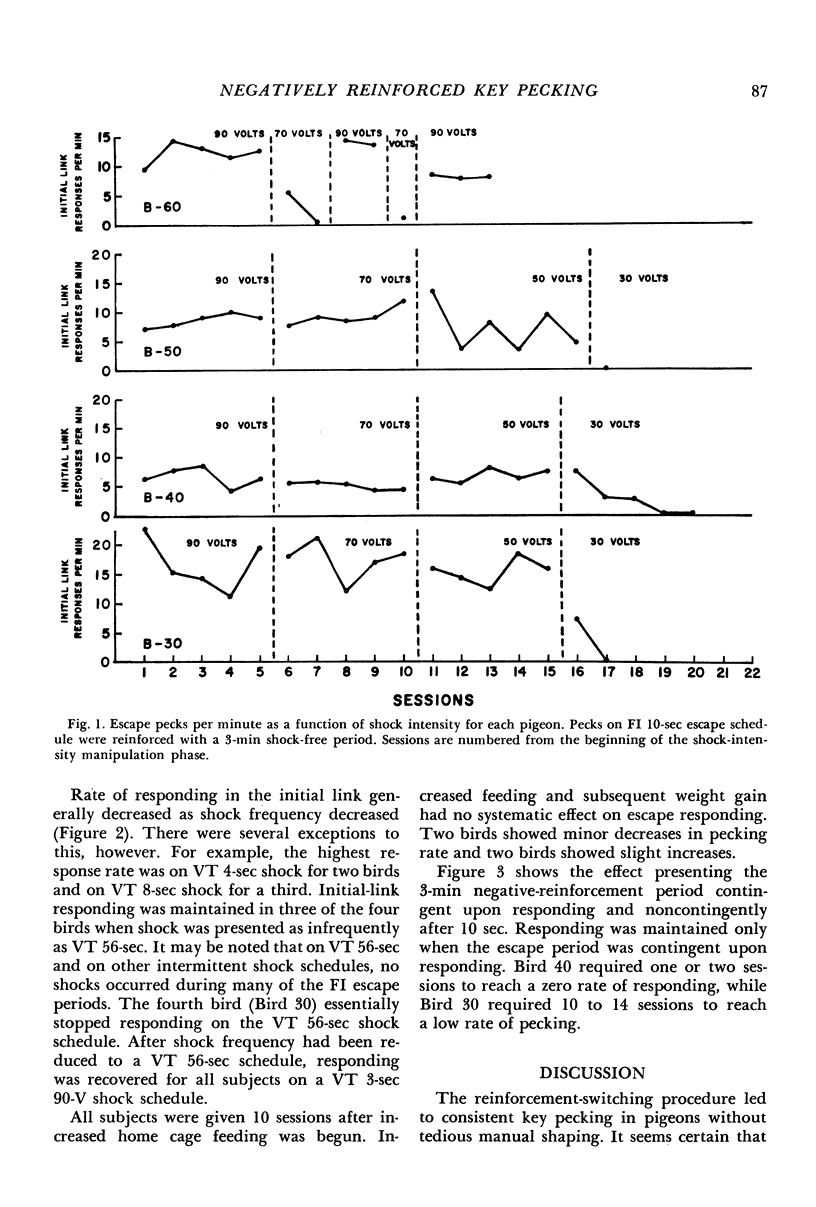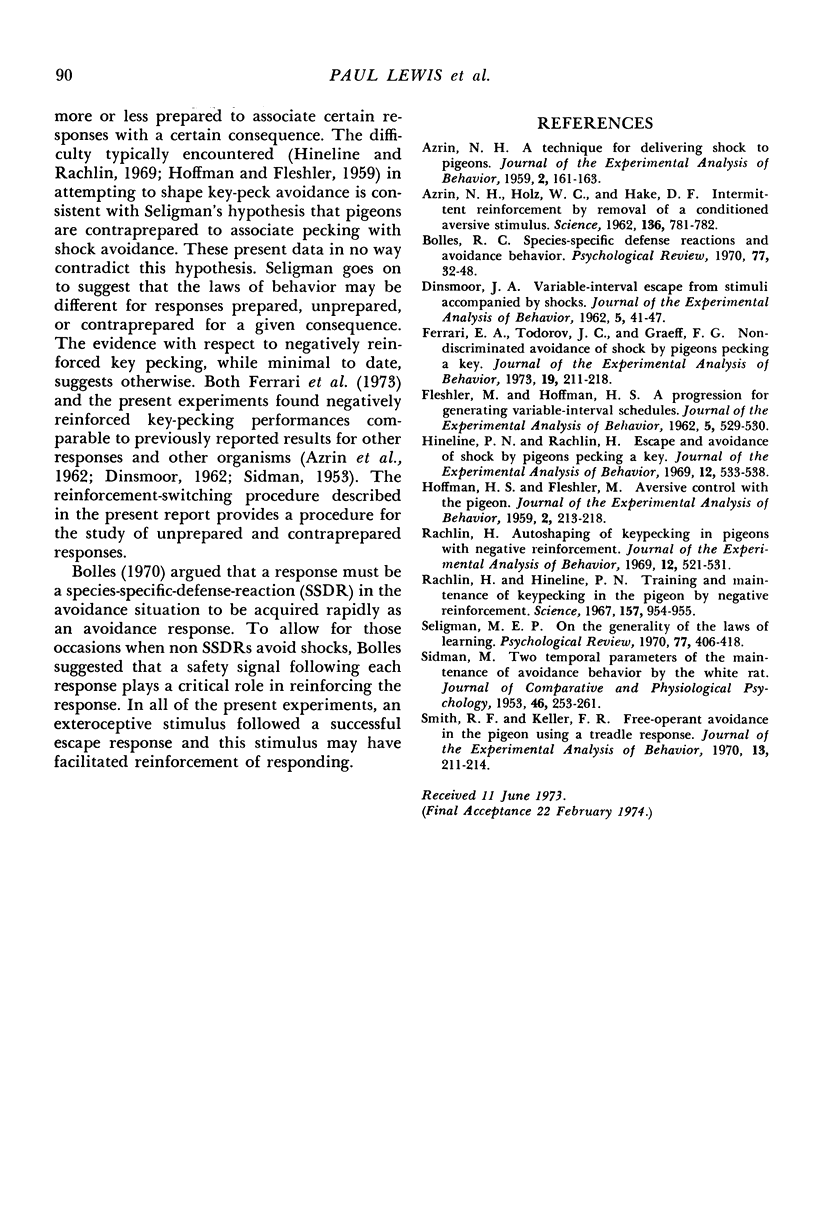Abstract
A reinforcement-switching procedure was used to produce negatively reinforced key pecking in pigeons. First, key pecking on a chain schedule (fixed-interval 10-sec variable-interval 60-sec) was conditioned using grain reinforcement. Second, intermittent shock in the initial link was introduced at a low intensity and gradually increased. Third, food reinforcement in the terminal link was eliminated. With shock at 90 V occurring on the average every 3 sec, initial-link pecking was maintained with no terminal-link food. Three of four pigeons responded consistently at shock intensities of 90, 70, and 50 V but not at 30 V. A fourth pigeon responded at but not below 90 V. Rate of response was directly related to shock frequency. Eliminating food deprivation did not affect the negatively reinforced performance.
Full text
PDF







Selected References
These references are in PubMed. This may not be the complete list of references from this article.
- AZRIN N. H. A technique for delivering shock to pigeons. J Exp Anal Behav. 1959 Apr;2:161–163. doi: 10.1901/jeab.1959.2-161. [DOI] [PMC free article] [PubMed] [Google Scholar]
- AZRIN N. H., HOLZ W. C., HAKE D. Intermittent reinforcement by removal of a conditioned aversive stimulus. Science. 1962 Jun 1;136(3518):781–782. doi: 10.1126/science.136.3518.781. [DOI] [PubMed] [Google Scholar]
- DINSMOOR J. A. Variable-interval escape from stimuli accompanied by shocks. J Exp Anal Behav. 1962 Jan;5:41–47. doi: 10.1901/jeab.1962.5-41. [DOI] [PMC free article] [PubMed] [Google Scholar]
- FLESHLER M., HOFFMAN H. S. A progression for generating variable-interval schedules. J Exp Anal Behav. 1962 Oct;5:529–530. doi: 10.1901/jeab.1962.5-529. [DOI] [PMC free article] [PubMed] [Google Scholar]
- Ferrari E. A., Todorov J. C., Graeff F. G. Nondiscriminated avoidance of shock by pigeons pecking a key. J Exp Anal Behav. 1973 Mar;19(2):211–218. doi: 10.1901/jeab.1973.19-211. [DOI] [PMC free article] [PubMed] [Google Scholar]
- HOFFMAN H. S., FLESHLER M. Aversive control with the pigeon. J Exp Anal Behav. 1959 Jul;2:213–218. doi: 10.1901/jeab.1959.2-213. [DOI] [PMC free article] [PubMed] [Google Scholar]
- Hineline P. N., Rachlin H. Escape and avoidance of shock by pigeons pecking a key. J Exp Anal Behav. 1969 Jul;12(4):533–538. doi: 10.1901/jeab.1969.12-533. [DOI] [PMC free article] [PubMed] [Google Scholar]
- Rachlin H. Autoshaping of key pecking in pigeons with negative reinforcement. J Exp Anal Behav. 1969 Jul;12(4):521–531. doi: 10.1901/jeab.1969.12-521. [DOI] [PMC free article] [PubMed] [Google Scholar]
- Rachlin H., Hineline P. N. Training and maintenance of keypecking in the pigeon by negative reinforcement. Science. 1967 Aug 25;157(3791):954–955. doi: 10.1126/science.157.3791.954. [DOI] [PubMed] [Google Scholar]
- SIDMAN M. Two temporal parameters of the maintenance of avoidance behavior by the white rat. J Comp Physiol Psychol. 1953 Aug;46(4):253–261. doi: 10.1037/h0060730. [DOI] [PubMed] [Google Scholar]
- Smith R. F., Keller F. R. Free-operant avoidance in the pigeon using a treadle response. J Exp Anal Behav. 1970 Mar;13(2):211–214. doi: 10.1901/jeab.1970.13-211. [DOI] [PMC free article] [PubMed] [Google Scholar]


